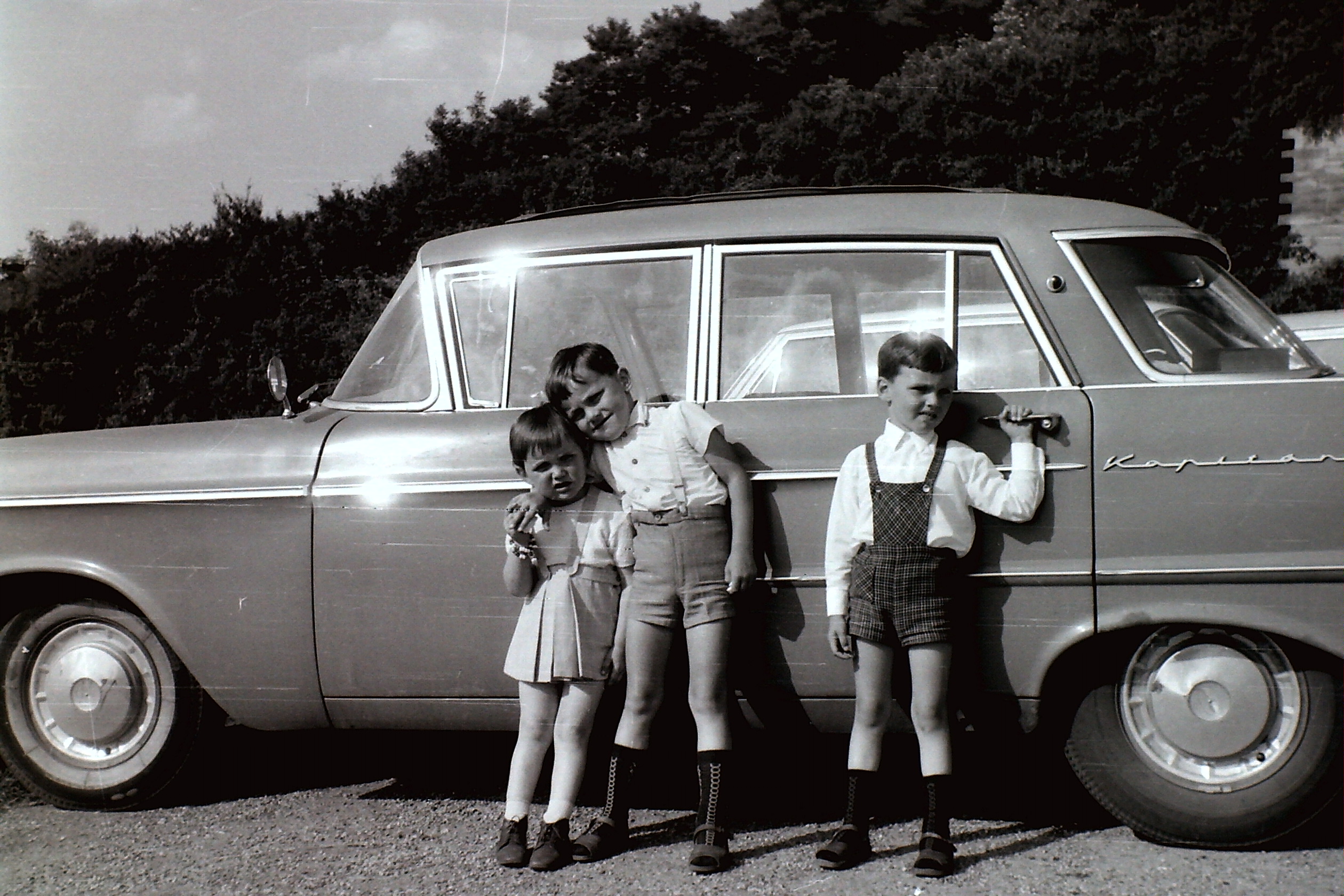Early 20th Century: My Grandparents’ Era

The story of my cyborg evolution is deeply intertwined with the technological revolutions experienced by my family across three generations. My grandparents, born in 1912, lived through a time when horses were still common for transportation, and the automobile was a novelty.
They witnessed the rise of cars, airplanes, and electrical appliances, which transformed daily life. By the time of their deaths in 1976 and 1979, the world had already seen the advent of television, household refrigerators, and early computers like ENIAC (1946) [3][6]. Their lives were marked by the transition from an agrarian to an industrial society.

Mid-20th Century: My Mother’s Era

My mother, born in 1946, grew up during the postwar boom of consumer technology. She experienced the proliferation of telephones, washing machines, and color TVs [5]. By the time of her death in 2018, she had witnessed the digital revolution—personal computers, mobile phones, and even early artificial intelligence systems. Her lifetime encapsulated a shift from analog to digital, from local to global connectivity.
As I reflect on their experiences, I see how each generation adapted to accelerating technological change. My own journey builds on this legacy, navigating the rapid developments of the Information Age and beyond.
1970s: Analog Beginnings
My journey as a “cyborg” began in the analog era. It was the early 1970s when I received my portable disk player from my aunt—a device that offered me freedom to explore music independently.
Around this time, I bought my first record: Suzi Quatro’s electrifying hit “Can the Can” (1973). Suzi’s rebellious energy resonated deeply with me, and soon my collection of 45 RPM singles began to grow.


To fully enjoy these records, I acquired my first Dual record player, a masterpiece of German engineering that brought music to life in a way that felt almost magical. But it wasn’t just about listening—I wanted to capture music too.
In 1974/75, I got my first radio recorder, which allowed me to record songs directly from radio shows like SWF3’s innovative “Point.” One of my earliest recordings was Manfred Mann’s Earth Band’s “Solar Fire”—a moment that fused creativity and technology in a way that felt revolutionary.
In 1975, I added a Hit Machine cassette compilation to my growing collection. These compilations were snapshots of pop culture at the time. Alongside this, a gifted tape recorder in 1976 became central to my musical explorations.
In 1983, I joined the portable music revolution with my first Sony Walkman. This iconic device allowed me to carry my favorite tunes anywhere—a personal soundtrack for daily life.

The Walkman Revolution (1983)

The Walkman wasn’t just a gadget; it was a cultural phenomenon that redefined how people experienced music.
The Digital Shift: CDs Replace Vinyl (1980s–1990s)The late 1980s marked a seismic shift with the rise of Compact Discs (CDs) replacing vinyl records.
CDs offered pristine sound quality and durability compared to vinyl’s analog warmth and fragility. By the early 1990s, they had become the dominant format for music consumption, reshaping how we listened to and collected music.
Digital Awakening: Entering the Computer Age (1980s)
In 1984, I played my first computer game, marking my entry into digital interactivity. A year later, in 1985, I encountered punch cards while working on sociological data analysis in Freiburg—an experience that connected me to computing’s earliest roots.

The University Years: From Labs to Laptops (1990s)
In 1990, while working on my Master thesis at the University of Hamburg, I spent countless hours in the CIP Pool, where computers became essential tools for research.

By 1995–2000, I transitioned through a range of computers—one even included a built-in TV station! During this period, floppy disks and diskettes were indispensable for storing data. Later came rewritable CDs (CD-RWs) and MiniDiscs (MDs), which revolutionized how we stored and shared media files.
The Internet Revolution: From Freedom to Commerce (2000–2008)
The early 2000s marked an era when the internet was still a space of creativity and freedom—a digital frontier for exploration and innovation.
Around this time, I experimented with my first Ubuntu Cloud, exploring open-source solutions for private cloud storage. However, by 2000, this utopia began shifting toward commercialization as big enterprises took over online spaces [2].

The launch of services like Amazon EC2 in 2006 marked cloud computing’s rise as hegemonic infrastructure. The internet boom ended abruptly with the dot-com bubble burst in 2001 and culminated in further consolidation during the financial crisis of 2008.
The Research Institute Era: Affordable Tech for Big Ideas (2000s)
In 2000, I purchased three Medion laptops from Aldi for use at my research institute—affordable yet reliable machines that supported academic projects. Over time, I transitioned through various laptops—from Medion to Dell—each better suited to modern demands.
The Communication Revolution: Phones and PDAs (2005–2010)

Around 2005, I joined the mobile revolution with my first mobile phones from brands like Medion and Ericsson. In 2009 came my first Palm device, bridging traditional computers with modern smartphones.
Later smartphones like iPhone and Sony models seamlessly integrated multimedia capabilities into everyday life—a true manifestation of Donna Haraway’s cyborg concept.
The Apple Era: A New Ecosystem (2011–Present)
In 2011, I acquired my first MacBook laptop and began migrating slowly into Apple’s ecosystem. By 2014, I started experimenting with tablets through an iPad. By 2018, iPads became central tools for research and writing.
In 2019 came another milestone: purchasing an Apple Watch—a wearable device that blurred lines between health tracking and communication technology.

Reflections on My Cyborg Evolution
As Donna Haraway suggests in A Cyborg Manifesto, cyborgs blur boundaries between human and machine [2]. From analog devices like record players to digital tools like laptops and cloud services—each piece shaped who I am today.
Recording Manfred Mann’s Earth Band from SWF3’s “Point” show was an early act of cyborg writing—a way of marking reality through technology [1][2]. Similarly, experimenting with Linux or embracing Apple reflects how technology continually redefines interaction with reality.
Today—Sunday, January 19th, 2025—I look back not just as a user but as co-creator in technology’s story.
Final Thought
We are all cyborgs now—creatures shaped by our tools as much as we shape them [2][5].

As we move forward into an ever-more connected future dominated by AI systems and cloud hegemony—one thing is certain: humanity’s potential lies where human imagination meets machine innovation.
Sources:
- [1] 10 Critical Inventions and Innovations of World War Two | History Hit https://www.historyhit.com/inventions-and-innovations-of-world-war-two/
- [2] Information Age – Wikipedia https://en.wikipedia.org/wiki/Digital_Revolution
- [3] The Scientific and Technological Advances of World War II https://www.nationalww2museum.org/war/articles/scientific-and-technological-advances-world-war-ii
- [4] 1962-2022: A 60-Year Timeline of Events Technology Innovation https://www.corbinball.com/article/29-futurism/263-60yeareventtechtimeline
- [5] The Spread of Technology since 1900 – The Pietist Schoolman https://pietistschoolman.com/2012/07/30/the-spread-of-technology-since-1900/
- [6] A History of Technology: 1813 to 2018 – Media Genesis https://mediag.com/blog/our-technological-advances-from-1813-to-2018-calculators-to-smartphones/
- [7] Timeline of historic inventions – Wikipedia https://en.wikipedia.org/wiki/Timeline_of_general_technology
- [8] Eight milestones in the development of computers and home … https://www.cnbc.com/2018/03/27/eight-milestones-in-the-development-of-computers-and-home-technology.html
*This website was created by myself in dialogue with different AI’s. Some of the pictures are AI generated, some from my personal photo archive.


